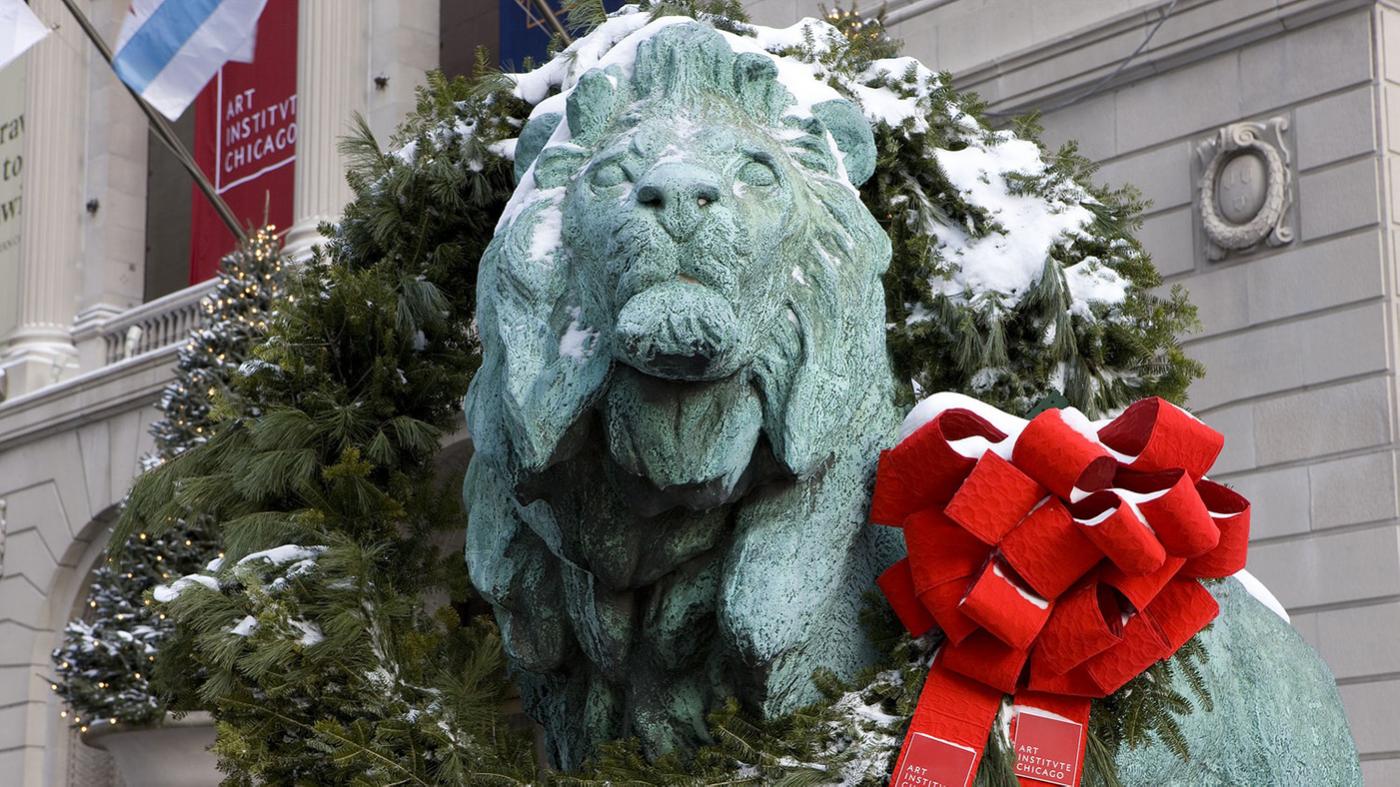The Story of the Art Institute's Iconic Lions
Daniel Hautzinger
December 7, 2018

As the 125th anniversary year of Chicago’s 1893 World Columbian Exposition winds down, there is one more significant event to celebrate that came out of that city-changing Fair: the opening of the Art Institute of Chicago in its Michigan Avenue Beaux-Arts home on December 8. The construction costs for the stately building were split between the Art Institute, which had been founded as the Chicago Academy of Design in 1866 and continually outgrown previous spaces, and the Exposition, which used it to host assemblies during the Fair such as the World’s Parliament of Religions.
The Boston architects Shepley, Rutan, and Coolidge designed the neoclassical building, which announces its serious artistic purpose and lineage via its limestone cladding, Corinthian columns, friezes copied from the Parthenon, and a triangular pediment under which are listed the names of famed artists (not that the Art Institute owned works by any of those artists at the time). But, however impressive it looked, when the building opened for the Exposition in May of 1893 and even when it became the Art Institute in December, it was missing a crucial feature: the two bronze lions that stand guard in front.
Those weren’t unveiled until several months later, on May 10, 1894. Modeled by the sculptor Edward Kemeys, and weighing more than two tons each, they were described by Kemeys himself as “on the prowl” (the north lion) and “in an attitude of defiance” (the south).
 Photo: Art Institute of Chicago
Photo: Art Institute of Chicago
Kemeys was America’s foremost animalier, or animal sculptor, who had been inspired to teach himself sculpture when he saw an artist modeling a wolf’s head from wax at the zoo in New York’s Central Park. Originally studying animals in zoos to create his life-like replicas, he eventually began taking trips to the American West in order to observe the animals in the wild. He hunted the majestic animals found on the plains and in the mountains, dissecting them (as Leonardo Da Vinci did with human corpses) to understand their skeletal structure and musculature for his sculptures of panthers, bears, deer, jaguars, and more.
The Art Institute lions are modeled on African lions, made larger than life. Since their installation, they have become icons not only of the museum but also Chicago itself, donning the hats or helmets of the city’s various sports teams and festive wreaths during the holiday season. They “speak” to passersby who scan the QR code near them with a smart phone, in the voices of actors Mandy Patinkin and Tracy Letts, plus they even have their own Twitter account – and one may even be running for mayor!
Looking for more Art Institute fun? Our sister station WFMT celebrated the anniversary with music from the Chicago Symphony Orchestra's concert celebrating the opening of the new building, and with a quiz of musical paintings in the Art Institute's collection.







